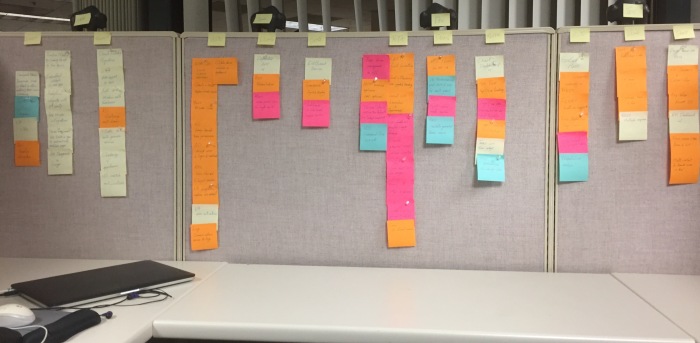
Started an experiment with Kanban to see what my board would look like. I split the board into four vertical sections: Idea, Spec, Dev, and Test. The latter three sections were split into the typical “TODO”, “Doing”, and “Done”. I did not really know what to expect except to find plenty of items in the TODO list, which was the case!
The “Idea” section was split into “Concept” and “Research”. The latter included items that are being currently researched as candidates for being added to the product. The “Concept” sub-section, on the other hand, was a bag of raw ideas that have been tossed around over the past few months, either by development, business people, or customers. What I learned from this section was interesting.
The bag of ideas in the “Concept” sub-section contained quite a large number of what seemed to be sizable projects. Looking further into these items I found that they are quite disparate and the unifying theme is not at all clear. This helped me realize that I needed to focus our product development efforts quite a bit. In trying to pick which of these items should be included and which should be deferred or rejected, I realized that the problem is at a higher level; the business level. We have been struggling for quite a while to precisely formulate our marketing message and deciding the exact customer segment to target. This reflected clearly on my board.
My first experiment with Kanban was pretty useful, and fun too!